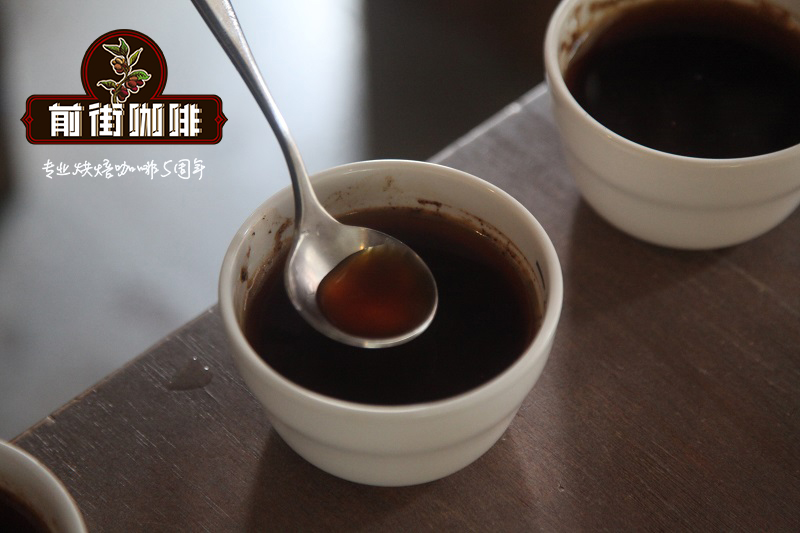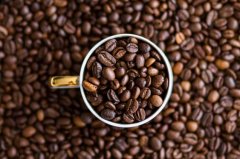The coffee cup test should pay attention to these six details how to ensure the consistency of coffee cup measurement.

If each cup of coffee sample on the cup test table actually has a different degree of extraction, should you trust your cup test notes?
For all those who want to buy, sell raw coffee beans, or roast coffee, cup testing is an indispensable tool.
It is used to compare batches, identify flavor characteristics, identify defects in raw and cooked beans, make purchasing decisions, and determine planting, processing and baking methods.
Therefore, the accuracy and consistency of the cup test results become extremely important. To learn more about how to achieve this goal, I asked Danny Pang, the technical sales manager of Marco Beverage System, the international judge of the COE Excellence Cup, and the Common Man Coffee Roaster team based in Singapore.
Why is the consistency of cup test important?
The general manager of Matthew McLauchlan,Common Man Coffee Roaster told us: "when you are making any business decisions, it is very important to have accurate and consistent information." "
The quality and temperature of the water used in the cup test, the thickness of the ground coffee powder, the difference in the degree of baking, and even the local ambient temperature may affect the accuracy of the cup measurement. This will allow you to use unreliable data for follow-up work.
Matthew added: "what we want to do is to be able to analyze and evaluate the quality of the coffee itself. To do this, we must first standardize as many controllable factors as possible, so as to ensure that when we compare different samples, the only flavor difference comes from the coffee bean itself. "
Variable 1: water quality
The mineral content and hardness of the water will not only affect the taste of the water itself, but also affect the extraction of coffee powder particles. Therefore, if you test the same coffee in different locations, you may get different scores and flavor descriptions, unless the water quality is controlled.
"Water quality standards are a very important variable because water accounts for a very high proportion of the coffee liquids you taste," Matthew said.
SCA cup testing guidelines say that the water used for cup testing should be "clean and odorless, but not distilled water or soft water treated water." "the ideal TDS range should be 125-175ppm.
You should know the quality of your cup test water, Danny said. "to ensure that the water quality tested in each cup is consistent, it is necessary to use a water quality testing tool to detect a single source of water, and only water that meets the standard can be used as cup water. "
Matthew also told me that bean bakers sometimes bring their own testing tools, such as the refractometer used to test TDS.
Don't forget that even if it's the same source, the water quality can change, and Danny recommends that you check the water quality once a week.
Variable factor 2: water temperature
According to the SCA standard, when water is poured into a measuring cup and comes into contact with coffee powder, the water temperature must be about 200 °Fhand 93 °C. But in fact, it is not so easy to control the temperature.
It is important to use equipment that can provide stable water temperature and accurate hot water. Matthew tells us that he uses Marco's water heater, which is designed with the stability of water temperature as the primary consideration.
Another point is that once the hot water comes into contact with the air, the temperature will drop. Matthew advises us to pour hot water into the test cup as quickly as possible and to reduce the idle time between each cup.
Danny said that during the cup evaluation of the COE Excellence Cup, the problem of losing temperature was solved by using a large kettle. Freshly boiled hot water is poured out of a 4-liter kettle and poured into 20-22 test cups placed on the table within a minute and a half, each filled with water.
The shape of the kettle is also important, Danny said. It's best not to use a gooseneck kettle at this time. "in this way, the comparison of coffee may be distorted, because the first cup receives the hottest water, while the last cup receives the coldest water, because the gooseneck kettle greatly increases the surface area of the water in contact with the air, resulting in a large amount of heat loss. "
Accuracy is important. Wasting a few seconds, or a water temperature difference of half a degree C, sounds like nothing, but it may affect the extraction of coffee. "it's important to maintain the consistency of the cup samples on the table, and make sure that when we analyze the flavor of each sample, the only difference comes from the coffee itself, not the temperature of the extracted water," Matthew said.
Variable factor 3: baking degree
If you are comparing the potential of different raw beans rather than evaluating the best baking degree, minimize the variability caused by baking or exhaust as much as possible. Your bean baker should understand the sample preparation rules laid down by SCA, including how to measure baking degree, ripening time (rest time), sample storage conditions, and so on.
Variable factor 4: degree of grinding
"the degree of grinding is probably the most difficult part, and it is also a bit difficult to follow international standards because it is a bit difficult to test and quantify," Matthew told me.
A water heater can help you heat water to the desired temperature, and there are several criteria for baking, but grinding is a bit difficult. Having said that, it is important to use the correct degree of grinding, and to reduce the ratio of fine powder to coarse powder as much as possible. Pay attention to the quality of the bean grinder and use the sieve to ensure the consistency of the grinding degree.
In the standard set by SCA, coffee bean samples should be weighed in whole beans and then ground within 15 minutes before water injection. The grinding degree should be slightly thicker than the average hand-punched scale, and about 70-75% of the particles can pass through the American standard 20-mesh screen. SCA recommends that at least five cups of each sample be prepared before the consistency of the sample can be evaluated.
However, we should also pay attention to the cross-contamination of the samples caused by the bean grinder, because some of the residual powder from the previous grinding will stay in the channel. SCA recommends that before grinding the sample tested in the cup, it is best to grind a small amount of the same beans and discard them to ensure that even the residual powder in the channel is the same coffee as the sample.
Variable factor 5: cup testing process
Repeatability and consistency are inseparable, and designing a rigorous process can help you achieve this goal. Matthew said to me, "for example, when you have filled half of the cup samples with water, you have to leave for three minutes because you are about to answer the phone, and by the time you come back, the water temperature has dropped, but you continue to use this water to inject the remaining samples, then it is obvious that some samples will be overextracted, while others will be underextracted. "
However, even minor differences can affect the consistency of your cup test results. Danny told me that cup testers should:
After stirring three times, the slag will be broken, do not stir too hard, let the disturbance affect the extraction.
When fishing for slag, do not insert the cup spoon into the cup, as it will cause disturbance.
After each sip, soak the cup spoon with clean water, and then dry the edges with toilet paper to minimize the chance of cross-contamination between the samples.
Keep quiet during the cup test to avoid affecting other people's thoughts or distracting them.
Variable cause 6: cup tester
Having a professionally trained team is the key to establishing a standard process. "having experienced testers can make the team more flavor corrected, communicate more efficiently and score more consistently," Common Man Coffee Roaster's Colin and Tam told me.
However, this is also one of the most difficult factors to control. Danny said that when it comes to food and flavor issues, different cultural differences can lead to differences in the base point of scores.
In order to solve this problem, the cup test judges of raw bean competitions, such as the COE Excellence Cup, must meet certain eligibility requirements. "Cup testing should not only have at least a few years of cup testing experience, but they must continue to do cup testing on a regular basis. In addition, many corrections have to be made before each cup test. "
For coffee farmers and bean bakers, it may be a good idea to train cup testing team members together and conduct tasting courses on fruits, spices, and other foods together. This training is even more important if there are members of the team from different countries. If your team's Asian Cup testers often taste dragon fruit or grapefruit, it's best to let your European team be familiar with the flavor of these fruits as well. You can also consider designing some flavor correction exercises, such as comparing everyone's cup test results for the same sample.
Because cup test results are the basis of important business decisions, from purchasing raw beans, determining baking degree, and even identifying micro-batches of experimental treatments, we have to get the right information, and what you need is reliable information that you can fully trust.
So quantify as many steps as possible, then train your team, and pay attention to baking, grinding, water quality, and water temperature. Your efforts will be rewarded.
Important Notice :
前街咖啡 FrontStreet Coffee has moved to new addredd:
FrontStreet Coffee Address: 315,Donghua East Road,GuangZhou
Tel:020 38364473
- Prev

What is the problem that leads to the continuous and stable production of Italian coffee?
No barista will ignore the effect of "extraction temperature" on coffee, but few people realize that the extraction temperature is actually determined by "water temperature" and "coffee powder temperature". In daily operation, it is difficult for us to have the time and energy to accurately measure the temperature of coffee powder. However, excessive heat will cause the aroma of coffee powder to volatilize ahead of time, which has become coffee.
- Next

Costa Rican Coffee Costa Rica Iris Coffee Source and Flavor description
With regard to Costa Rican coffee, there are two things that can be said to be commendable about Costa Rica's coffee industry in boutique coffee: one is the microprocessing plant revolution (Micromill Revolution), and the second is the colorful honey treatment. Not long ago, the honey treatment that distinguishes the color of white, yellow, orange, gold, red and black is caused by pectin residue, drying time, turning frequency and so on.
Related
- Beginners will see the "Coffee pull flower" guide!
- What is the difference between ice blog purified milk and ordinary milk coffee?
- Why is the Philippines the largest producer of crops in Liberia?
- For coffee extraction, should the fine powder be retained?
- How does extracted espresso fill pressed powder? How much strength does it take to press the powder?
- How to make jasmine cold extract coffee? Is the jasmine + latte good?
- Will this little toy really make the coffee taste better? How does Lily Drip affect coffee extraction?
- Will the action of slapping the filter cup also affect coffee extraction?
- What's the difference between powder-to-water ratio and powder-to-liquid ratio?
- What is the Ethiopian local species? What does it have to do with Heirloom native species?

